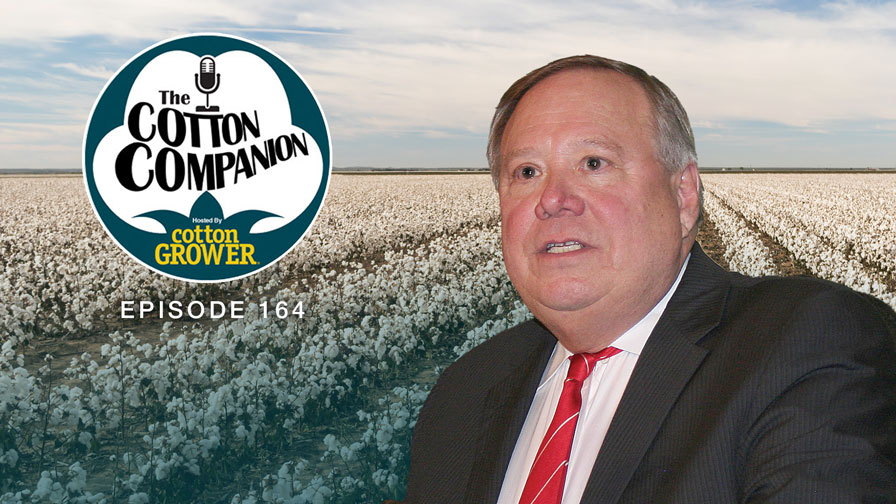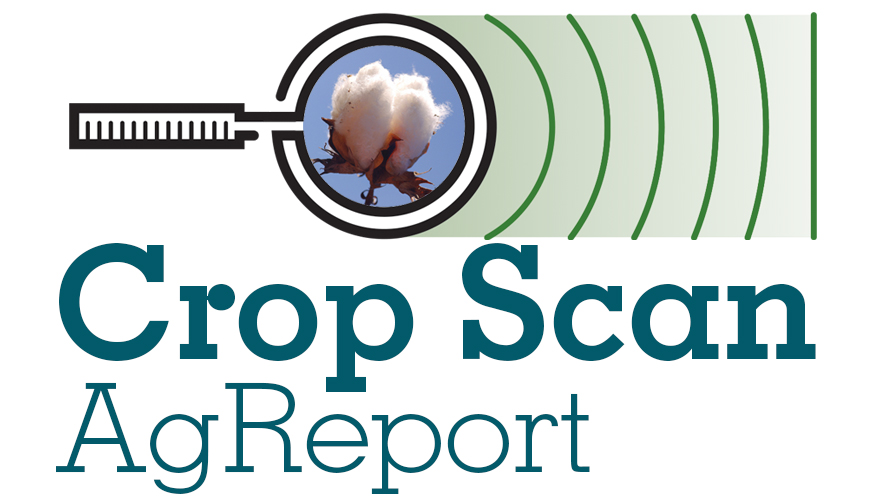Historic Changes Announced at ICA’s 2010 Annual Meeting
The Gala Dinners held each year by the International Cotton Association (ICA) are always grand, dramatic events, enveloping each and every attendee in St. George’s Hall with a palpable sense of history and tradition. But on October 1, 2010, from the moment ICA President Cliff White stepped up to the podium to deliver his speech, there was something in the air … a feeling that this night would be different from the others.
Less than 30 minutes later, the feeling was confirmed. The audience was abuzz with excitement because history had been made. In what was surely one of the most memorable President’s speeches ever delivered in the 160-year history of the ICA, White had made not just one historic announcement, but several:
• That there will be a fundamental shift in the ICA’s membership structure.
• That ICA will not only hold a Spring event in Dubai in March 2011, but also that the 2012 ICA Annual Meeting will be held in Hong Kong–the first time in the history of the association that it won’t take place in Liverpool.
• A change in the term of the ICA President.
Better Balance through Diversity
Perhaps the most significant of all the developments at ICA is the change in membership structure. While ICA never was intended to be a “merchants’ organization,” that’s the perception that has grown over the years, and if it wanted to be truly representative of the entire cotton industry–an “association without borders,” as White says–ICA would have to reach out to the less-represented sectors.
“Our intent is very specific: We are seeking to attract more participation from the grower and spinning communities,” White said during an exclusive interview with Cotton International. “Much of the direction we’ve taken in the past few years has been done to engage those groups and get them more involved with the association.”
It’s in the best interests of all parties–whether they be producers, merchants, or mills–to have a stable marketing environment that emphasizes contract sanctity, and the only way to achieve that balance is to have a more diverse membership, according to White. “There is already enough risk in our business today; we don’t need to add to it by forcing people to wonder if their contracts will be honored. Getting producers and spinners more involved will increase stability in the trading environment, and that’s of benefit to everyone,” he says.
Change is difficult under any circumstances, and when it involves a break with tradition, that difficulty is magnified. But White says that the feedback he’s gotten has been very positive, reflecting the understanding that the cotton industry has gone through shifts in recent years that have changed the game forever.
“The changes I proposed were very well-received by our Board (which is, not by accident, the most ‘international’ Board we’ve ever had at ICA), and we’ve already seen an increased interest in membership from the spinning community, both in the subcontinent and in Asia,” he says.
One of the historical barriers to increasing membership has been cost, so White and the others on the ICA Board decided to alter their approach to tonnage fees. In years past, it was difficult for ICA to collect those fees, which resulted in a cash flow problem (not to mention the wasted time and energy that went into collection efforts). Under the new arrangement, rather than collect tonnage fees, members will be placed into one of four “bands” that determine the amount they owe. The bands are broad enough to maintain commercial confidentiality but narrow enough to ensure that members are paying a fee that corresponds to their size.
Generally speaking, there are four membership categories, ranging from Principal Firm at $4,100 annually to Associate Member at $500 annually. (For more specific details on membership fees and structure, visit http://www.ica-ltd.org/membership/structure-and-fees).
A more diverse ICA membership will provide three tangible benefits, White says:
1. Greater diversity of thoughts, perspectives and opinions.
2. The formation and acceptance of rules that are more fundamentally sound.
3. A lower cost of membership for everyone.
“The ICA operates on a not-for-profit principle, and since 75 percent of our income comes from membership fees, the more people who join, the cheaper it will become for everyone,” he says.
Going to Where the Business Is
It’s been seven years since the Liverpool Cotton Association changed its name to the International Cotton Association, and that trend toward “internationalization” continues to gain momentum. ICA took its first step in that direction in March 2010, when it held a two-day meeting in Singapore. With a theme of “Protecting Your Cotton Business,” the event was a huge success, with more than 470 delegates from 29 countries in attendance.
To maintain the momentum generated by that first successful international meeting, ICA plans to hold a meeting in Dubai in March 2011 (exact dates have not yet been determined). “No matter where we look today, the importance of markets in Asia is very evident,” White says. “The raw cotton market is no different, and this has resulted in the realignment of business strategies and created a need for close cooperation between buyers, sellers and established institutions in the marketplace.
“Our aim with Singapore 2010 was to provide a unique opportunity for the cotton community in Asia to come together to learn more about the market, to network, to make new contacts, to do business, and to debate the important issues affecting our industry. We certainly achieved this and we have been overwhelmed by the response.”
Dubai is a central location that will provide ease of access to attendees from all over the region, and equally important, it’s a “neutral” venue, White says. “If the event were held in India, it might be perceived as an ‘Indian’ event, and that goes for other locations such as the U.S., or Australia.
“One of the reasons these events are so attractive is that all parties can participate equally regardless of the growth they produce, the cotton they consume, or the market they trade in. Most other conferences held throughout the year are specific to a particular growth or region, but as a truly international organization, ICA events are designed to be held in a neutral venue where everyone in the cotton community can come together on equal footing.”
While some were concerned that ICA was taking an unnecessary risk by holding an event in Asia, White was sure that it was not just the right choice–it was the only choice. “I knew the interest was there and knew from talking to people in the industry that it would be a successful event,” he says. “But just as important, I knew that holding an event in Singapore would be a statement about what ICA stands for and the path it is going to take in the future. Dubai is the next step along that path and I’m confident that it will be every bit as successful as this year’s event was.”
But the ICA is “going global” with more than its Spring events. In 2012, the ICA Annual Meeting and Gala Dinner will be held in Hong Kong–the first time in the association’s history that the meeting will be held outside of the United Kingdom.
“Since the middle of the 19th century, cotton professionals from all over the world have been coming to Liverpool because that’s where the cotton business was,” White says. “But things have changed, and the time has come for us to go where the business is, where our customers are. And today, that means Asia.
“Moving the meeting to Hong Kong is a very big deal in terms of breaking with so many decades of tradition, but when you look at the way the global cotton business has changed, it’s clearly the right decision. We want our members to be active and engaged with the ICA, and we can’t always expect them to come to us,” he says.
Aligning the President’s Term
The changes at ICA aren’t all outwardly focused, however. One last change announced by White during his speech on October 1 involves the association’s internal affairs: a shift in the annual term of the ICA President. Rather than align with the calendar year (January 1 to December 31) as it has in the past, the term of future ICA Presidents will begin and end at the association’s Annual Meeting in October (beginning in 2011 with the incoming President, Ray Butler, managing director of Cotton Outlook).
“It will allow us to have our Annual General Meeting (AGM) at the same time as the Annual Dinner, which should allow for greater participation,” White says. “Our membership is international and it is difficult for them to justify two visits to the U.K. (one for the Annual Dinner and the other for the AGM), so combining them makes absolute sense. By having more members at our AGM, it will add to the sense of occasion but also provide opportunity to contribute to the direction of the ICA.”
Taken together, those are a lot of changes to absorb in a relatively short period of time–especially for an association such as ICA, which is steeped in more than a 160 years of tradition. To be sure, there has been a lot of debate among members about the changes ICA has made and questions about the long-term impact they will have on the organization.
But White doesn’t shy away from making the tough decisions, nor does he want members to keep their opinions to themselves. He is fully aware that introducing different outlooks will sometimes result in controversy and disagreement, but those are just normal growing pains for an organization determined to be relevant in the new global business model.
“We don’t want to expand just from a geographic standpoint; we want to grow throughout the different segments of the industry, as well,” White concludes. “We want to increase the diversity of perspectives among our membership, so we welcome debates and discussion. The more voices we have to help shape the future direction of the ICA, the better off we’ll all be.”








